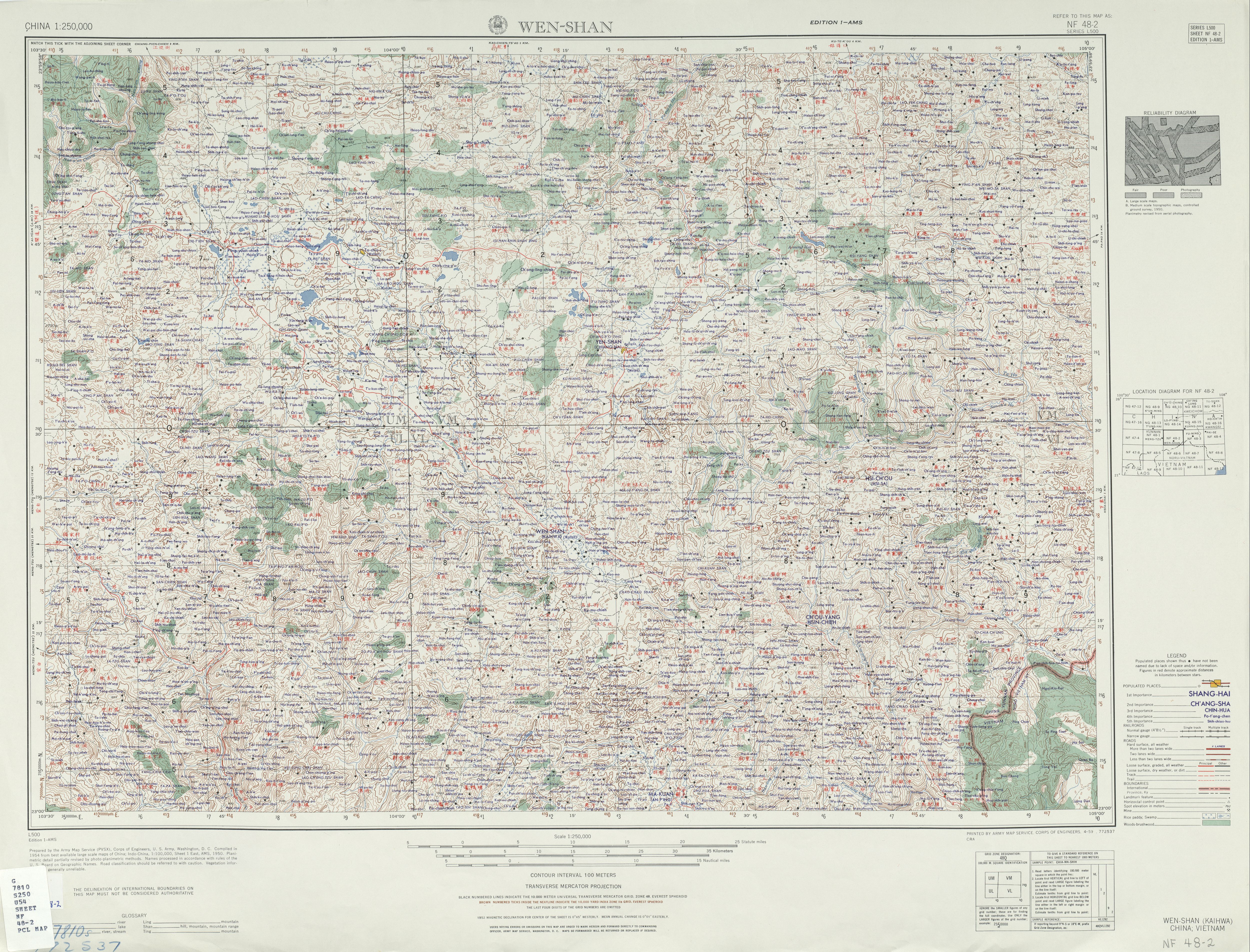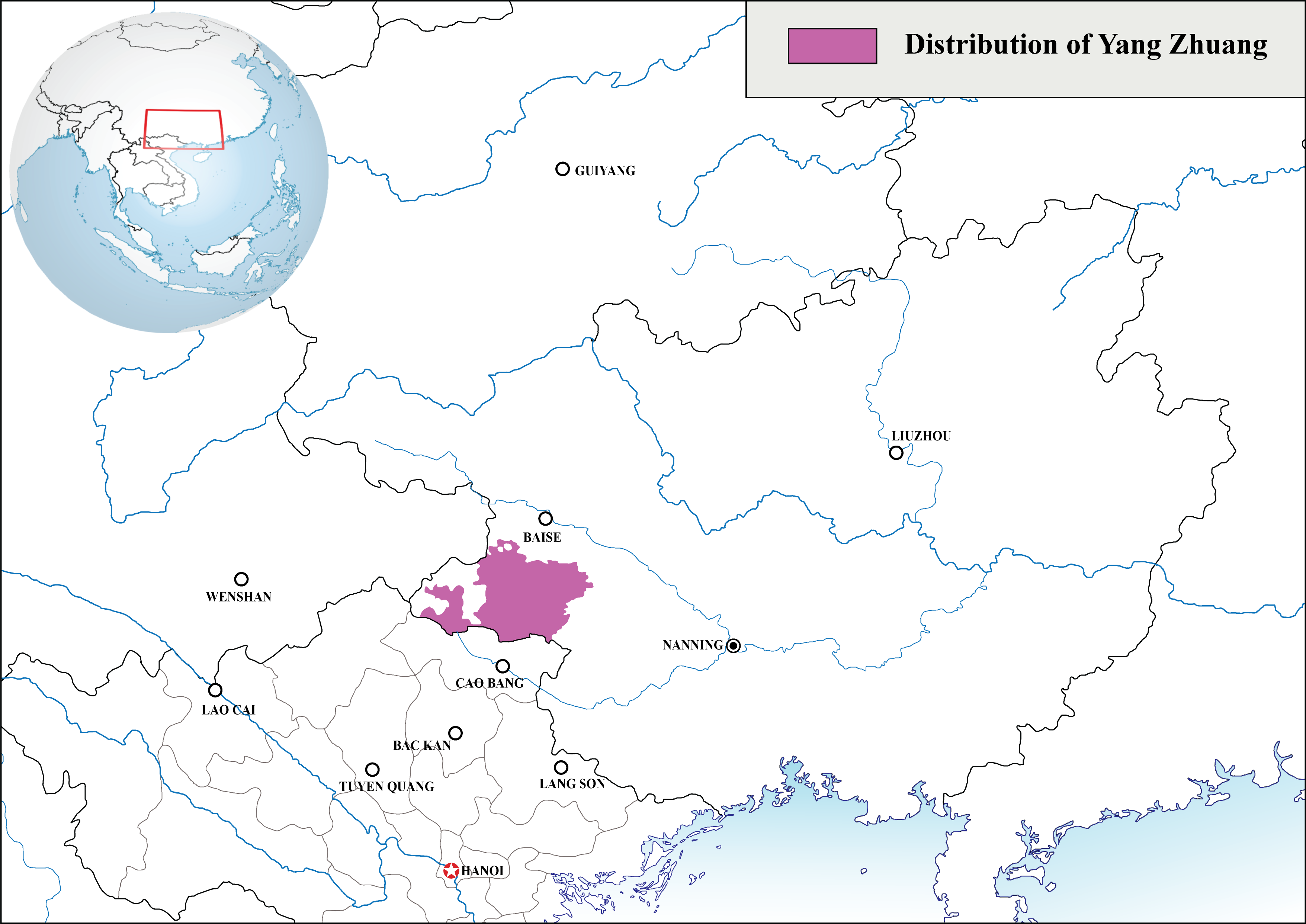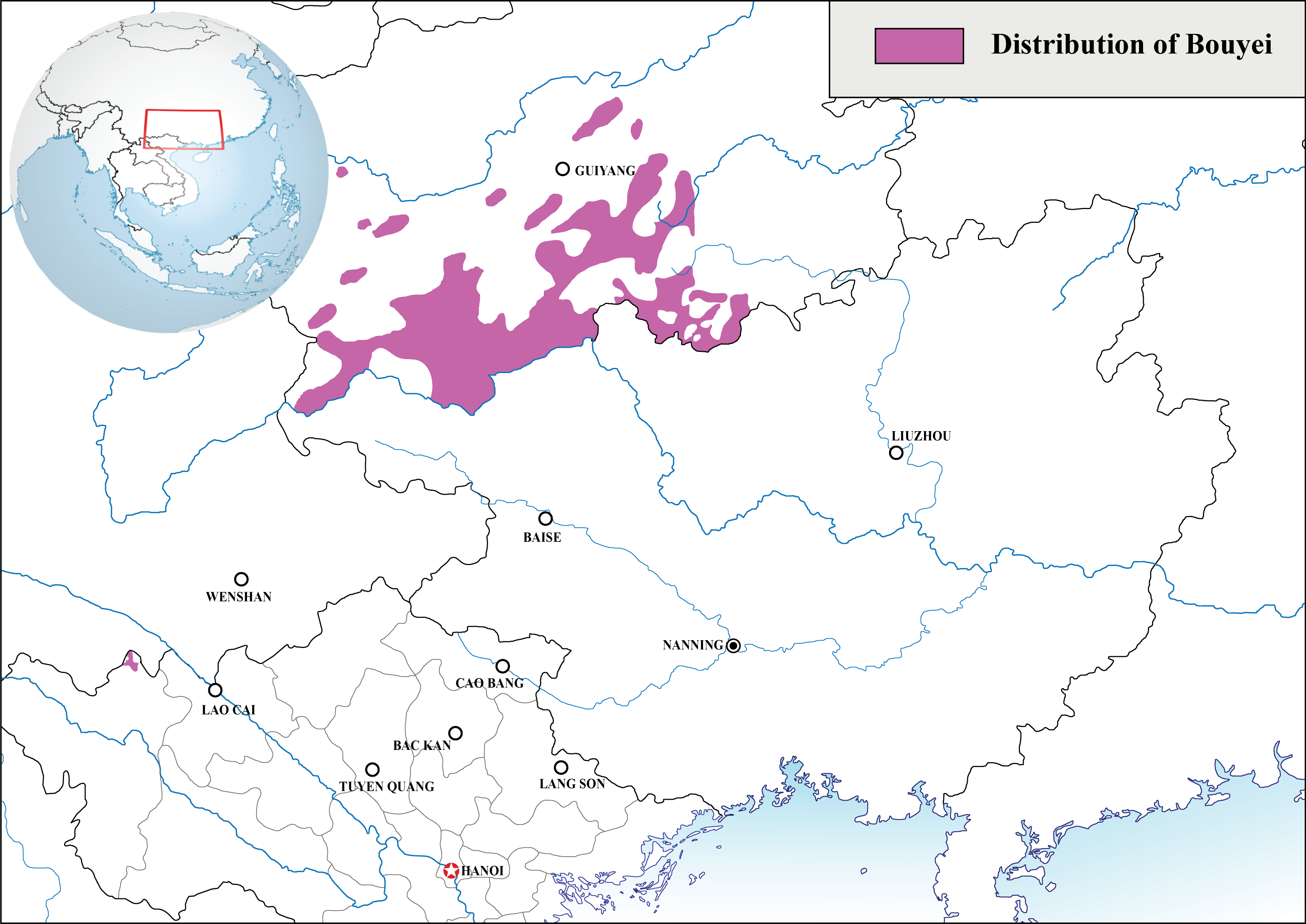|
Buyang People
The Buyang people are an officially unrecognized Kra ethnic group living in Wenshan Prefecture, Yunnan and Napo County, Guangxi in China. They are closely related to the Laha, Qabiao, Gelao, and Lachi. The Buyang language is spoken, although many Buyang are now shifting to Zhuang and Southwestern Mandarin. In Yunnan, the Buyang are classified by the Chinese government as Zhuang, while they are classified as Yao in Guangxi (Li 2006). Names The name Buyang comes from the Zhuang ' (alternatively '), which means "other people." The Buyang of Napo County, Guangxi call themselves the ', while Guangnan Buyang call themselves '. In Napo and Jingxi counties, many Zhuang are called "Buyang" by other Zhuang groups. In southeastern Guizhou and Tianlin, Longlin, and Xilin counties of Guangxi, many villages also contain the word ''yang'' 央, suggesting that those villages may be formerly Buyang-speaking areas that had been assimilated by the Zhuang people. The Buyang of Gua ... [...More Info...] [...Related Items...] OR: [Wikipedia] [Google] [Baidu] |
Wenshan Zhuang And Miao Autonomous Prefecture
Wenshan Zhuang and Miao Autonomous Prefecture is an autonomous prefecture in southeastern Yunnan Province, People's Republic of China and the easternmost prefecture-level division of the province. It borders Baise, Guangxi to the east, Vietnam's Hà Giang Province to the south for , Honghe Hani and Yi Autonomous Prefecture to the west and Qujing to the north. Subdivisions Ethnic groups Wenshan is highly diverse. According to a local saying, "Han and Hui live by the market, Zhuang and Dai live by the water, Miao and Yi live on the mountains, and Yao live among the bamboos." () Some of Wenshan's ethnic groups include: *Han Chinese * Tai peoples ** Zhuang (3 branches according to Kaup (2000); 4 branches according to Johnson (2011)Johnson, Eric C. 2011.A Lexical and Phonological Comparison of the Central Taic Languages of Wenshan Prefecture, China: Getting More Out of Language Survey Wordlists Than Just Lexical Similarity Percentages. SIL Electronic Working Papers 2011-005: 1 ... [...More Info...] [...Related Items...] OR: [Wikipedia] [Google] [Baidu] |
Jingxi County
Jingxi (, Zhuang: Cingsae Si) is a county-level city of western Guangxi, China. It is under the administration of Baise City. Administrative divisions There are 8 towns and 11 townships in the district: Towns: * Xinjing (新靖镇), Huadong (化峒镇), Hurun (湖润镇), Ande (安德镇), Youlin (龙临镇), Quyang (渠洋镇), Yuexu (岳圩镇), Longbang, Wuping (武平) Townships: * Tongde Township (同德乡), Qianzhuang Township (壬庄乡), Anning Township (安宁乡), Dizhou Township (地州乡), Ludong Township (禄峒乡), Nanpo Township (南坡乡), Tianpan Township (吞盘乡), Guole Township (果乐乡), Xinjia Township (新甲乡), Kuixu Township (魁圩乡) Demographics Jingxi's population was 605,100 (2010). 99.71% of the people belong to the Zhuang ethnic group. The rest include Han, Yao, Miao, and other ethnic groups. Languages David Holm (2010)Holm, David. 2010. "Linguistic Diversity along the China-Vietnam Border." In ''Linguistics of the T ... [...More Info...] [...Related Items...] OR: [Wikipedia] [Google] [Baidu] |
Nanning
Nanning (; ; za, Namzningz) is the capital and largest city by population of the Guangxi Zhuang Autonomous Region in Southern China. It is known as the "Green City" because of its abundance of lush subtropical foliage. Located in the South of Guangxi, Nanning is surrounded by a hilly basin, with a warm, monsoon-influenced humid subtropical climate. Beginning in 1949, Nanning's economy began developing beyond its former role as essentially a commercial and administrative centre, as it underwent sustained industrial growth. Today, Nanning is considered the economic, financial and cultural center of Guangxi, and the chief centre for the training of the Zhuang minority in Guangxi. The People's Park is located in the center of the city. The city is home to several notable universities, including Guangxi University, Guangxi Medical University, Guangxi University for Nationalities and Guangxi Arts University. History Nanning, an ancient city with a long history and rich cu ... [...More Info...] [...Related Items...] OR: [Wikipedia] [Google] [Baidu] |
Pingguo County
Pingguo (; za, Bingzgoj Si) is a city of west-central Guangxi, China. It is the easternmost county-level division of the prefecture-level city of Baise. Two thirds of the population are Zhuang. The Pingguo Industry Park hosts an important part of China's aluminum industry. Since 2009, an ITF international tennis tournament has been held annually in Pingguo. Administrative divisions There are nine towns and three townships in the city: Towns: * Matou (), Xin'an (), Guohua (), Taiping (), Pozao (), Sitang (), Jiucheng (), Bangxu (), Fengwu Town () Townships: * Haicheng Township (), Liming Township (), Tonglao Township () Climate See also * Pingguoyuan (other) Pingguoyuan () may refer to: * Pingguoyuan Subdistrict, Beijing Pingguoyuan Subdistrict () is a subdistrict on the center of Shijingshan District, Beijing, China. It borders Sijiqing Township in its northeast, Bajiao and Gucheng Subdistricts i ... References External links Counti ... [...More Info...] [...Related Items...] OR: [Wikipedia] [Google] [Baidu] |
Donglan County
Donglan County (, Zhuang: ) is a county of northwest Guangxi, China. It is under the administration of Hechi City. Donglan County has given its name to the Donglan golden-line barbel ('' Sinocyclocheilus donglanensis''), a small fish that is only known from one cave in Donglan. Administrative divisions There are 5 towns, 8 townships and 1 ethnic township in the county: Towns: *Donglan Town (东兰镇), Aidong (隘洞镇), Changle (, Foochow Romanized: Diòng-lŏ̤h) is one of 6 urban districts of the prefecture-level city of Fuzhou, the capital of Fujian Province, China. It occupies a land area of and a sea area of . Changle was established in the sixth year of Emper ... (长乐镇), Sanshi (三石镇), Wuzhuan (武篆镇) Townships: * Simeng Township (泗孟乡), Lanmu Township (兰木乡), Changjiang Township (长江乡), Bachou Township (巴畴乡), Jingu Township (金谷乡), Datong Township (大同乡), Huaxiang Township (花香乡), Chuxue Township (� ... [...More Info...] [...Related Items...] OR: [Wikipedia] [Google] [Baidu] |
Nandan County
Nandan (, za, Nanzdanh) is a county of Hechi City, in the northwest of Guangxi, China. It has an area of and a population of (2010). Administrative divisions There are 7 towns, 3 townships and 1 ethnic township in the county. Towns: * Chengguan (城关镇), Dachang (大厂镇), Chehe (车河镇), Mangchang (芒场镇), Liuzhai (Liuchai) (六寨镇), Yueli (月里镇), Wu'ai (吾隘镇) Townships: * Luofu Township (罗富乡), Zhongbao Miao Ethnic Township (中堡苗族乡), Bawei Yao Ethnic Township (八圩瑶族乡), Lihu Yao Ethnic Township (里湖瑶族乡) Demographics In 2010 Nandan's population was . 72.73% () of the people belong to the national minority. Ethnic groups include Zhuang, Han, Yao, Mulao, Maonan, Miao, and Shui. In these ethnic groups, Zhuang population was 101,165 (34.71%), Han was 75,903 (27.27%). [...More Info...] [...Related Items...] OR: [Wikipedia] [Google] [Baidu] |
Huanjiang County
Huanjiang Maonan Autonomous County ( Zhuang: ; ) is an ethnic Maonan autonomous county in the north of Guangxi, China, bordering Guizhou province to the north and northwest. It is under the administration of Hechi Hechi () is a prefecture-level city in the northwest of the Guangxi Zhuang Autonomous Region, People's Republic of China, bordering Guizhou to the north. In June 2002 it gained city status. Geography and climate Hechi is located in northwester ... city. Climate References County-level divisions of Guangxi Administrative divisions of Hechi Autonomous counties of the People's Republic of China {{Guangxi-geo-stub ... [...More Info...] [...Related Items...] OR: [Wikipedia] [Google] [Baidu] |
Yizhou District, Hechi
Yizhou (), formerly Yishan County (宜山县), is a district under the administration of Hechi City, Guangxi Zhuang Autonomous Region, People's Republic of China. Yizhou is located in the northwest of Guangxi on the Long River in an area noted for its magnificent karst formations. The limestone karst formations dot the district and surrounding country and several rivers cut through the landscape. The district of Yizhou has several hundred thousand inhabitants. The surrounding countryside is home to a number of ethnic Zhuang villages. The economy is centered on sugar production, with a British-Chinese jointly run sugar processing plant nearby. The countryside surrounding Yizhou is similar in appearance to the tourist Mecca Yangshuo, located in the east of Guangxi. While Yizhou has a convenient tourist infrastructure, foreign tourists are sparse. A notable person from Yizhou is the Song Dynasty singer Liu Sanjie 刘三姐, renowned for her voice. The people of Yizhou believe t ... [...More Info...] [...Related Items...] OR: [Wikipedia] [Google] [Baidu] |
List Of Administrative Divisions Of Guangxi
Guangxi Zhuang Autonomous Region, an autonomous region of the People's Republic of China, is made up of the following three levels of administrative division. Administrative divisions All of these administrative divisions are explained in greater detail at administrative divisions of China The administrative divisions of China have consisted of several levels since ancient times, due to China's large population and geographical area. The constitution of China provides for three levels of government. However in practice, ther .... This chart lists only prefecture-level and county-level divisions of Guangxi. Recent changes in administrative divisions Population composition Prefectures Counties References {{Guangxi Guangxi ... [...More Info...] [...Related Items...] OR: [Wikipedia] [Google] [Baidu] |
Yang Zhuang Language
Yang Zhuang is a Tai language spoken in southwestern Guangxi, China, in Napo, Jingxi and Debao counties. Li Jinfang (1999) suggests that the Yang Zhuang originally spoke the Buyang language, and later assimilated with other Tai-speaking peoples (''See Buyang people#History''). Distribution Zhuang dialects given in the county almanacs of Jingxi County, Debao County, and Napo County are listed below. This region is also known as the "Dejing" 德靖 area. All names and statistics are from the local county almanacs (县志), as quoted in Jackson et al (2012). Note that these divisions are often ethnic rather than geographic. Thus, some "Yang" peoples may actually speak non-Yang Zhuang dialects, and vice versa. Jackson (2011) shows that most Yang dialects do indeed form a distinctive subgroup against Fu (also shown to be a distinctive subgroup) and Nong. Variants with multiple names include: *Yang 仰 in Jingxi / Nongshun 农顺 in Napo *Fu 府 in Jingxi / Lang 狼 in Debao / ... [...More Info...] [...Related Items...] OR: [Wikipedia] [Google] [Baidu] |
Bouyei Language
The Bouyei language ( autonym: Haausqyaix, also spelled ''Buyi'', ''Buyei'' or ''Puyi''; ; vi, tiếng Bố Y or ) is a language spoken by the Bouyei ethnic group of Southern Guizhou Province, China. Classified as a member of the Northern Tai group in the Tai language branch of the Tai–Kadai language family, the language has over 2.5 million native speakers and is also used by the Giay people ( vi, Giáy) in some parts of Vietnam. There are native speakers living in France or the United States as well, which emigrated from China or Vietnam. About 98% of the native speakers are in China. Bouyei's characteristics are similar to the other members of its language branch. It is generally monosyllabic and word order and particles are the main forms of grammar. Bouyei's syllable initials match up closely to the other Northern Tai languages, with relatively fast simplification and merging. Bouyei sentences can be shown to contain many different levels of phrasing. The contempo ... [...More Info...] [...Related Items...] OR: [Wikipedia] [Google] [Baidu] |
Longlin County
Longlin Various Nationalities (Gezu) Autonomous County () is an autonomous county, under the jurisdiction of the prefecture-level city of Baise, in the west of Guangxi, China, bordering Guizhou Province to the north. As of 2019, the county's population was 437,907 people. The county is inhabited by several ethnic minorities, including the Miao, Yi, Gelao and Zhuang, who constitute approximately 80% of the county's population. History Present-day Longlin was incorporated first incorporated into the Song Dynasty in 1253, when it fell under the jurisdiction of Anlongdong as part of the . In 1402, the area was reorganized as Anlong Prefecture, until 1666, when it was again reorganized as . Xilong Prefecture underwent administrative changes in 1729, but otherwise went unchanged until 1912, when the Republic of China was established and the area was reorganized as Xilong County. The area became part of the People's Republic of China in March 1950, and a communist-led local go ... [...More Info...] [...Related Items...] OR: [Wikipedia] [Google] [Baidu] |



